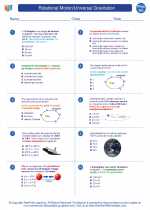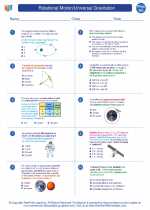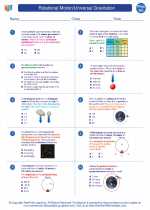Atmospheric Pressure
Atmospheric pressure is the force per unit area exerted on a surface by the weight of the air above that surface in the Earth's atmosphere. It is the result of the gravitational attraction of the planet on the atmospheric gases. As we move upwards in the atmosphere, the atmospheric pressure decreases because there is less air above us exerting a force downwards.
Factors Affecting Atmospheric Pressure
- Altitude: Atmospheric pressure decreases with increasing altitude. This is because there is less air above a given point at higher altitudes, leading to lower pressure.
- Temperature: Warmer air is less dense and exerts less pressure, while colder air is denser and exerts more pressure. Therefore, temperature variations can affect atmospheric pressure.
- Weather Systems: High and low-pressure systems in the atmosphere are associated with different weather conditions. High-pressure systems generally bring fair weather, while low-pressure systems are associated with clouds, precipitation, and storms.
Measuring Atmospheric Pressure
Atmospheric pressure is commonly measured using a device called a barometer. There are two main types of barometers: mercury barometers and aneroid barometers. Mercury barometers use the height of a column of mercury to measure pressure, while aneroid barometers use a flexible metal box to detect changes in pressure.
Units of Pressure
The SI unit of pressure is the pascal (Pa), which is equal to one newton per square meter. Another common unit of pressure is the atmosphere (atm), which is the average atmospheric pressure at sea level. Other units include millimeters of mercury (mmHg) and pounds per square inch (psi).
Applications of Atmospheric Pressure
Understanding atmospheric pressure is important in various scientific and practical applications, including weather forecasting, aviation, scuba diving, and the functioning of respiratory systems in humans and other animals.
Study Guide
To effectively study atmospheric pressure, consider the following:
- Understand the concept of pressure and how it relates to force and area.
- Explore the factors that affect atmospheric pressure, such as altitude and temperature.
- Learn about the instruments used to measure atmospheric pressure, including barometers.
- Practice converting between different units of pressure, such as pascals, atmospheres, and millimeters of mercury.
- Explore real-world applications of atmospheric pressure and how it impacts various phenomena.
By mastering the concept of atmospheric pressure, you will gain valuable insights into the behavior of gases in the Earth's atmosphere and its significance in diverse fields of science and technology.
.◂Physics Worksheets and Study Guides High School. Rotational Motion/Universal Gravitation

 Worksheet/Answer key
Worksheet/Answer key
 Worksheet/Answer key
Worksheet/Answer key
